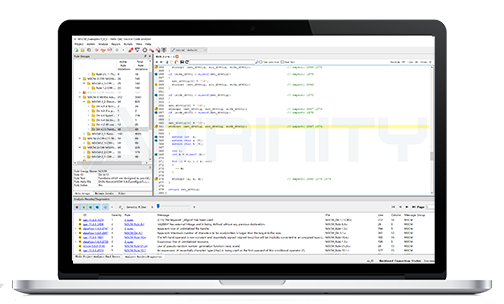
Perforce QAC is the industry-leading static analysis solution for the C language, providing a comprehensive suite of features to help to enforce a wide range of coding standards, and to find bugs in new and legacy code. Leveraging our core capabilities, QAC offers an automated, highly effective means to analyze your code against the chosen coding standard, with metrics and code structure visualizations bringing a further level of clarity to complex projects. Use this tool to prevent bugs and to identify coding issues extremely early in the development cycle, passing better code into the latter stages of the development process.
Leveraging our core capabilities, QAC is the most sophisticated static analysis solution for advanced C++ environments, combining language compliance (up to the latest C++11 standard) with advanced language and dataflow analysis. With compliance packages for MISRA C++, HIC++ and JSF AV C++ coding standards, Helix QAC offers an automated, highly effective means of analyzing your code against your chosen coding standard, with metrics and code structure visualizations bringing a further level of clarity to complex C++ projects.
SGS-TÜV Saar has certified QAC as “usable in the development of safety related software” for the key safety critical standards, IEC 61508, ISO 26262, EN 50128, IEC 60880 and IEC 62304, enabling our customers to achieve product certifications to these standards more easily and in less time.

Core Values
-
Automatically implement unified coding standards to ensure code compliance
-
Quickly identify potential defects and errors in code to improve software quality
-
Optimize code structure and improve code maintainability
-
Provide authoritative code compliance testing reports to meet standard certification requirements
-
Analyzing the security coding standards of software
-
Unconsciously enhance the coding ability of the development team
-
Significantly improve the efficiency of code walkthrough
Main Benefits
-
C/C++ language proprietary parser, integrated with a sophisticated dataflow engine
-
Identifies coding defects at the earliest possible stage in the development cycle
-
Dataflow analysis to catch bugs (includes Yices™ decision procedures technology under license from SRI International®)
-
Improves code reliability, maintainability, portability, re-usability and testability
-
Demonstrate compliance to coding rule sets and coding standards, including MISRA C/C++, JSF, and HIC++
-
Very precise diagnostic information (and extensive help text) for developers to identify defects, analyze the root causes and implement fixes
-
Configurable metric thresholds to limit code complexity
-
Automated code inspection provides instant, object, repeatable code audits
-
Minimal false positives, saving time, money and key experienced resources
Main Function
-
Coding Standard Check
-
Data Stream Analysis
-
Code Metrics Analysis
-
Custom Encoding Rules
-
Test Result Review
-
Reporting Platform
-
Certification And Authentication
-
 Coding Standard Check
Coding Standard Check QAC provides over 2,000 coding standards, allowing users to select rules based on their type, such as code naming, memory and resource usage, security, portability, undefined behavior, language restrictions, and more. Users can also configure QAC to target different sets of standards, such as MISRA C: 2004, 2012, MISRA C++: 2008, AutoSAR C++14, CERT C/C++, CWE C/C++, ISO/IEC TS 17961, HiCPP, JSF, etc. Test results directly reflect the code's compliance with coding standards, and users can double-click on test results to jump directly to the corresponding code lines. Referring to QAC's built-in help documentation, users can directly fix non-compliant code. QAC's code standard checks offer significant advantages in terms of rule authority and analysis accuracy. By leveraging QAC's code rule analysis, development teams can automate compliance with third-party standards, customer requirements, or the company's own unified coding standards, ensuring code consistency, reliability, and maintainability.
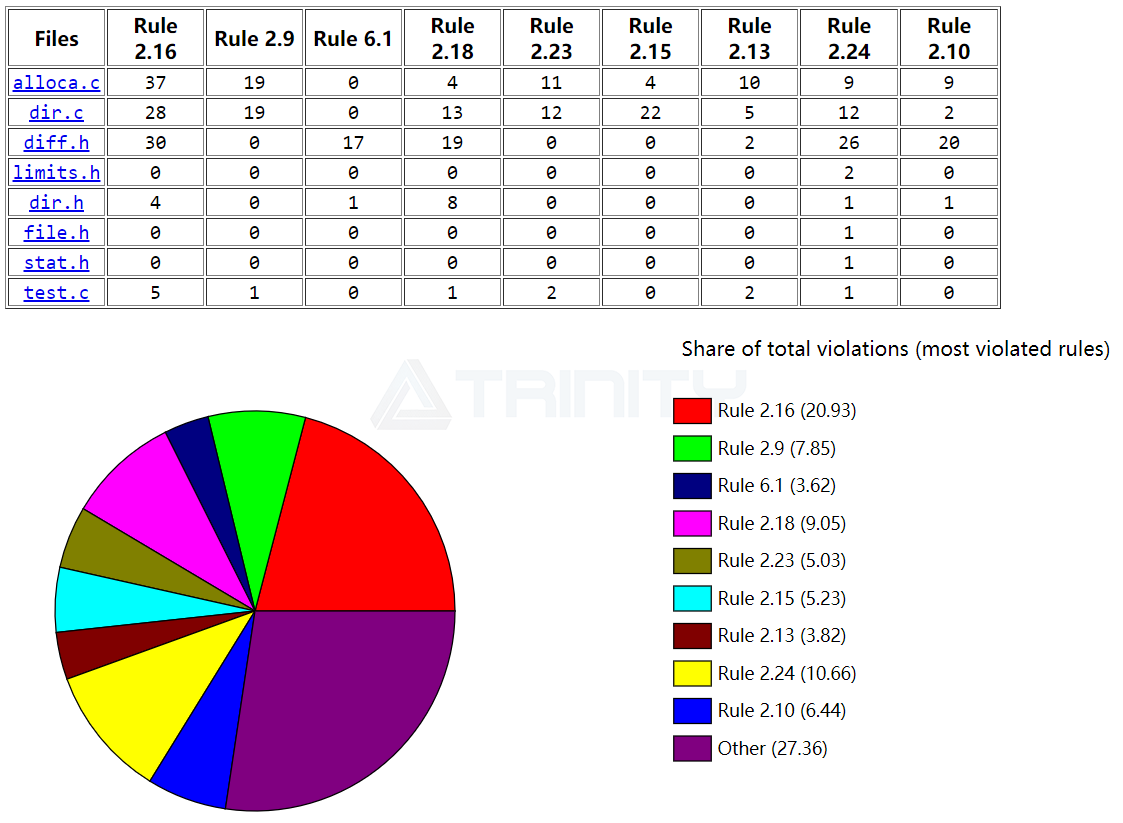
-
 Data Stream Analysis
Data Stream Analysis QAC leverages data flow analysis capabilities to automatically detect software code quality defects. It performs static analysis across classes and files to identify potential defects and errors in software, such as null pointer exceptions, array out-of-bounds access, division by zero, shift operations, and thread deadlocks, and displays detailed stack trace information for error triggers. QAC's data flow analysis functionality also supports user-defined analysis depth, enabling a reasonable balance between analysis depth and efficiency. QAC's data flow analysis is highly accurate with minimal false negatives. By leveraging QAC's data flow analysis functionality, developers can quickly detect runtime errors in software through static analysis prior to later dynamic testing phases, including unit testing, integration testing, and system testing. This significantly reduces the pressure of later testing phases and lowers the costs associated with debugging and fixing bugs identified during later testing.

-
 Code Metrics Analysis
Code Metrics Analysis QAC's code metrics analysis feature provides comprehensive statistics on software code metrics and structure, including commonly used metrics such as Function Circle Complexity (STCYC), Maximum Nesting Depth (STMIF), Number of External Variables in a File (STECT), and Number of Unprocessed Code Lines (STTPP), among dozens of other metrics at various levels. QAC enables development teams to view metrics at different levels by project, module, file, function, class, and more, and can display historical trend analysis charts. QAC also provides intuitive charts for the inclusion relationships of header files and the nesting relationships of functions. The code metric analysis feature of QAC helps developers quickly clarify the existing code structure and identify and optimize code blocks with unreasonable or overly complex structures.
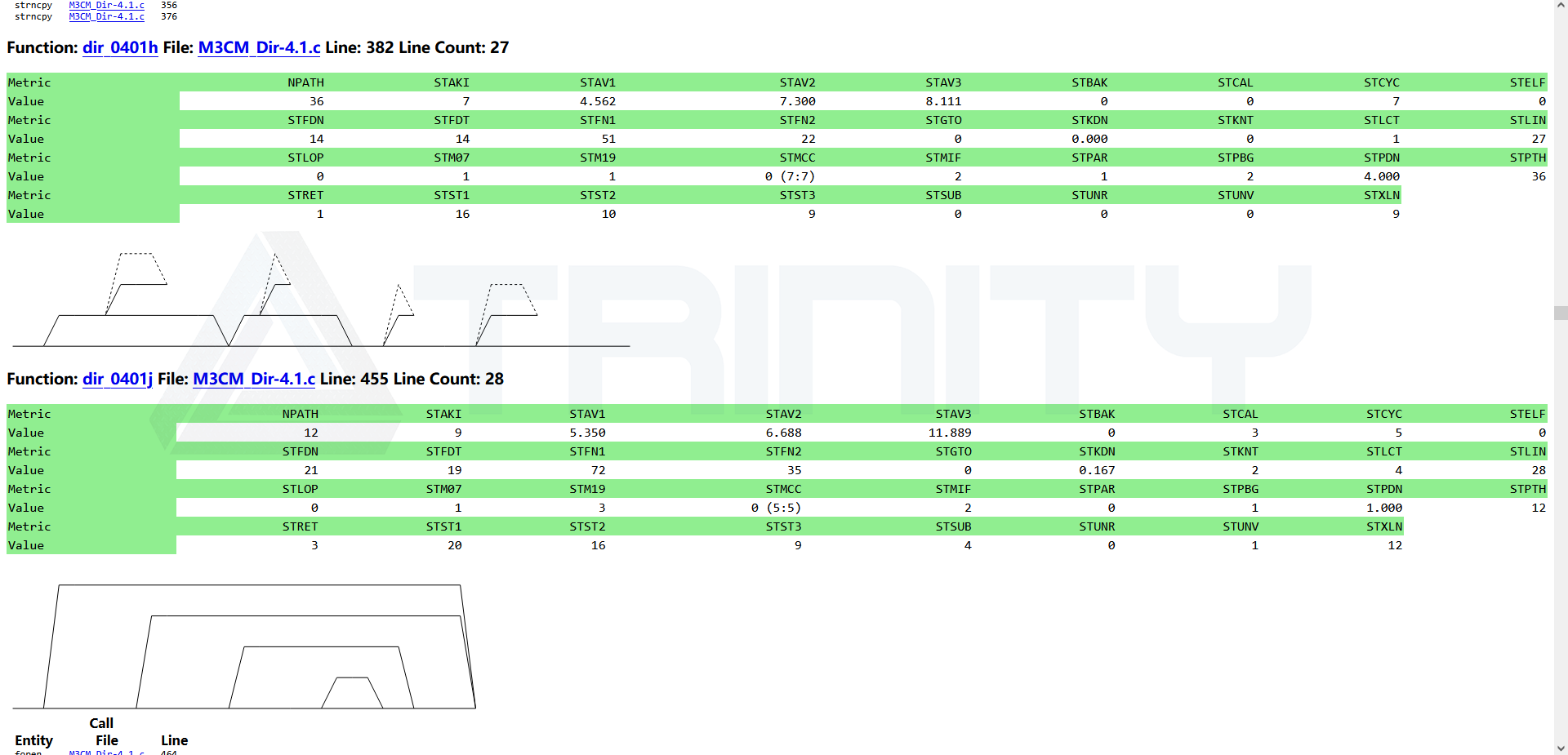
-
 Custom Encoding Rules
Custom Encoding Rules QAC supports user-defined coding rules to meet personalized usage requirements. Users can use QAC to create custom message rules by adding or modifying rule parameters, ultimately forming a set of coding standards tailored to the enterprise. In addition, considering that coding standards introduced by enterprises are often not static and may change due to different project requirements or development habits of different project teams, QAC's coding rule customization feature effectively meets the needs of users to continuously modify and optimize coding standards.
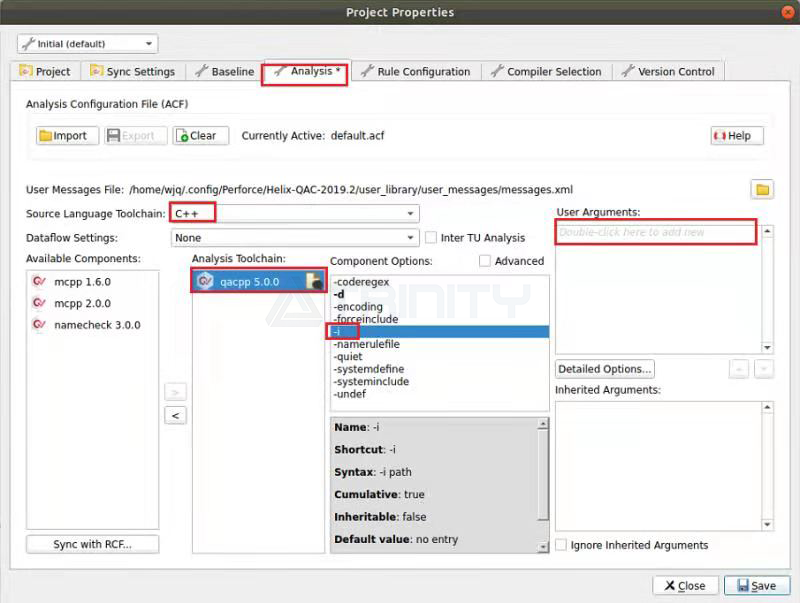
-
 Test Result Review
Test Result Review QAC provides a unified web-based test result review platform. R&D personnel can use QAC to review, communicate, or annotate the results of each static detection. This improves the efficiency of test communication and promotes timely modification or confirmation of test results. During the QAC review process, users can also individually suppress test results that they believe do not need to be modified, meeting personalized usage scenarios.
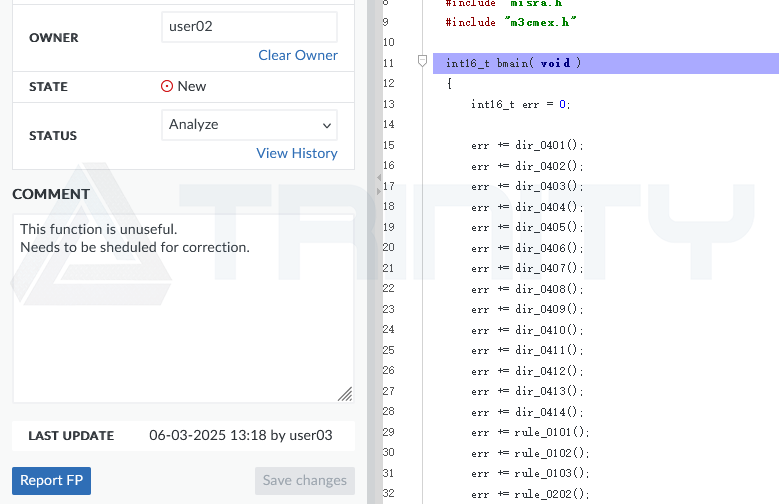
-
 Reporting Platform
Reporting Platform QAC offers two reporting methods: a desktop client and a central web reporting platform. The central web reporting platform, Validate, displays the test results for each project from centralized code static analysis, as well as various statistical reports and dashboards. Users can view detailed information by logging into the central web reporting platform via a browser using their own account, without the need to install or configure QAC tools, resulting in higher efficiency. Users can also use QAC's desktop software to perform tests and view results independently. Test results generated by the desktop client can also be uploaded to the central web reporting platform for team collaboration. QAC's central web reporting platform can also integrate with existing Microsoft Active Directory or LDAP systems, facilitating seamless integration with existing user management systems and enabling team-based usage.
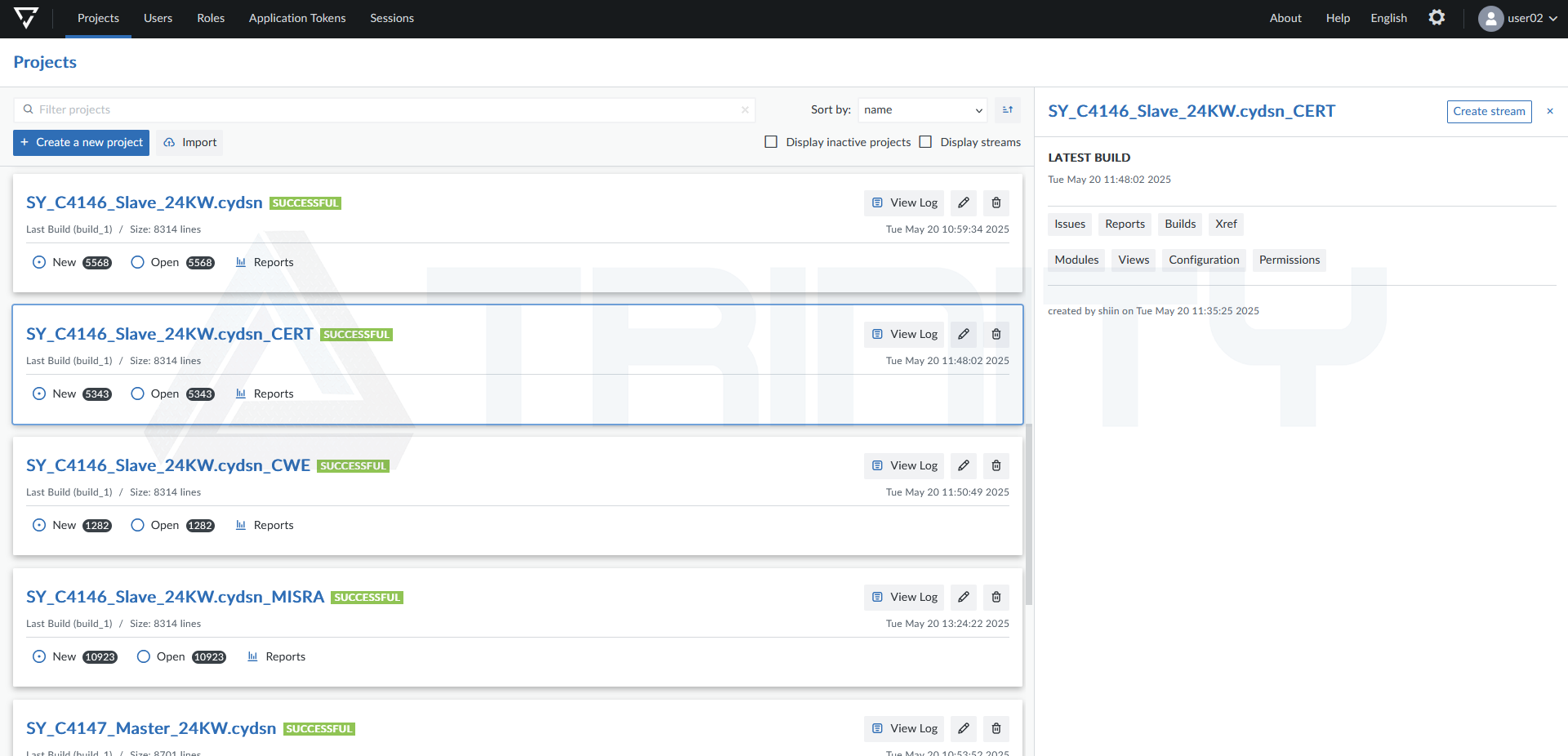
-
 Certification And Authentication
Certification And Authentication QAC has obtained certifications and approvals across multiple industries. These certifications were conducted by the internationally recognized third-party certification body TÜV-SÜD in accordance with standards such as ISO 26262, IEC 61508, EN 50128, IEC 62304, and IEC 60880, ensuring compliance with functional safety requirements for relevant industries. For projects with functional safety requirements, QAC can provide safety manuals and authoritative certification certificates. For aerospace industry projects, QAC can provide tool airworthiness certification packages compliant with DO-178B/C certification requirements in accordance with the DO-330 standard. QAC is also ISO 9001 certified. ISO 9001 is a widely adopted standard that ensures products meet and exceed customer requirements and satisfaction through continuous improvement efforts.
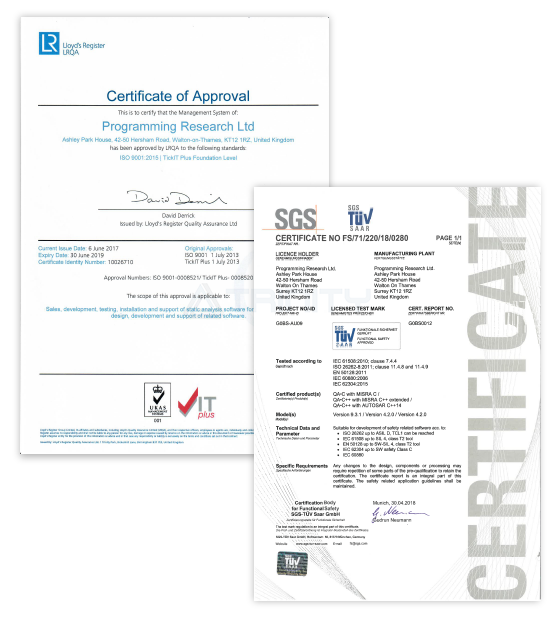
Supported Environment
Installation OS: | Windows/Linux/Solaris, etc. |
Supported C/C++ compilers: | |
VisualDSP | GCC |
arm-none-eabi-gcc | IAR |
COSMIC | KEIL |
Cypress | MPLAB |
Freescale_CW | Visual Studio |
GHS | QNX |
Customized compliers |
Related Resources
Related











